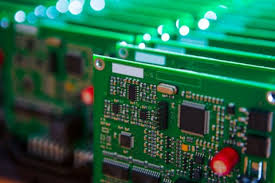Revolutionizing Modern Electronics with Flexible PCBs
Flexible Printed Circuit Boards (PCBs) are vital to the development of advanced technology in electronics today. They are intended for applications where rigid PCB technology is impractical to use due to space constraints or environmental factors. They are then made from materials that allow them to be flexible and move when used, such as polyimide or polyester film while still maintaining their working characteristics.
Aerospace & Healthcare: Critical /Density Applications
Flexible PCBs, which are light and take up less space, are indispensable in the aerospace industry. It is commonly employed in satellite systems, space probes and aircraft control Interface Control Document () →). Not only can they be made thinner and lighter, but also require the set-up to improve their overall performance in aerospace when every gram matters. For example, flexible PCBs contribute to a reduction in the overall weight of advanced space communications satellites by about 10%, resulting in operational cost savings of up to $40k/kg.
Flexible PCBs are also used in a variety of healthcare devices. These are utilized in contemporary pulmonary health care devices as well portable clinical gadgetry like heart pacemakers and also implantable cardio screens where adaptability to bend around irregular forms as well as movements with the body, for instance. This level of flexibility helps minimize patient discomfort and can make the device more dependable in life-or-death situations where poor function will lead to dangerous outcomes.
Enhancing Flexibility And Functionality In Consume Electronics
The demand for thinner, bendable, and more rugged devices in consumer electronics is growing rapidly. Flex-PCBs are the basis of the foldable smartphones, flexible LED display screens and also wearable technology. This includes flexible PCBs in the newest foldable smartphone models, which allow the screen to be folded without impacting internal circuitry, and will last over 200k folds through that device's lifecycle.
The flexible PCBs are an integral part of wearable technology such as fitness trackers and smartwatches because compacting of parts to be placed into a very small place. These applications need circuits that can bend, fold, and move with high motion activity build into the operation of the PCB which results in flexibility circuit boards.

Some Innovative Examples From The Automotive Industry
The gradual shift of the automobile industry toward electronics in vehicles has paved way for its metamorphosis, which is garnering attention from a significant fraction. Dashboards, sensors and more often utilize flexible PCB which is at the forefront of their Durability and Flexibility. With further integration of electronic functions in the vehicles, there is less and less space available. This problem is addressed through the use of flexible PCBs which can go into slot spaces, curve around corners and connect devices without requiring more than one connector that could be cause for failure.
Future Outlook: Diverse Applications
The use of flexible PCBs will likely continue to grow as technology progresses and device configurations evolve. The discovery of new and innovative methods for creating materials in conjunction with the current state of the technology is going to mean for improved performance and longevity from these circuits, opening up even more industries.
Flexible PCBs, due to their inherent traits play a crucial role in many applications in diverse industries and are advancing the features of electronic devices. With ever-advancing technology, and the continued innovation of different industries, there is no doubt that the requirement for flexible PCB will increase exponentially in order to be used in this elite category of electronic devices.